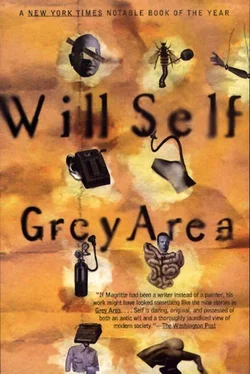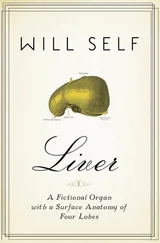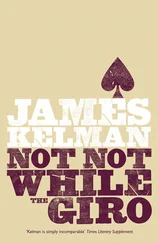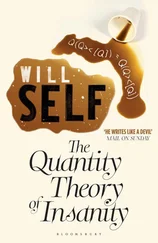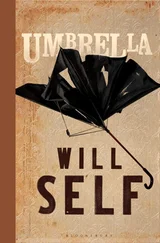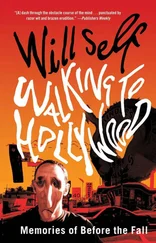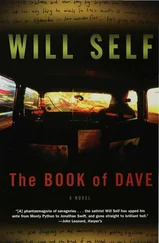It’s lucky for me that the five ‘police procedurals’ I wrote during my marriage are still selling well. Without the royalties I don’t think I would be able to keep my family in the manner to which they have unfortunately become accustomed. I cannot imagine that the book I am currently working on, Murder on the Median Strip, will do a fraction as well. (I say that confidently, but what fraction do I mean? Certainly not a half or a quarter, but why not a fiftieth or a hundredth? This is certainly conceivable. I must try and be more accurate with my figures of speech. I must use them as steel rulers to delimit thought. Woolliness will be my undoing.)
In Murder on the Median Strip (henceforth M on the MS), a young woman is raped, murdered and buried on the median strip of the M40 in between Junction 2 (Beaconsfield) and Junction 3 (High Wycombe). As shall become apparent, it is a howdunnit, rather than a whodunnit, The murder occurs late on a Friday evening when the motorway is still crowded with ex-urbanites heading for home. The police are patrolling, looking for speeders. Indeed, they have set up a radar trap between the two principal bridges on this section of road. And yet no one notices anything.
When the shallow, bitumen-encrusted grave is discovered, the police, indulging in their penchant for overkill, decide to reconstruct the entire incident. They put out a call on Crimewatch UK for all those who were on the motorway in that place, at that time, to reassemble at Junction 2. The public response is overwhelming, and by virtue of careful interviewing — the recollection of number plates, makes of car, children making faces and so forth — they establish that they have managed to net all the cars and drivers that could have been there. The logistics of this are immensely complicated. But such is the ghastliness of the crime that the public demands that the resources be expended. Eventually, by dint of computer-aided visualisations, the police are able to re-enact the whole incident. The cars set off at intervals; the police hover overhead in helicopters; officers in patrol cars and on foot question any passers-by. But, horror of horrors, while the reconstruction is actually taking place, the killer strikes again — this time between Junction 6 (Watlington) and Junction 7 (Thame). Once more his victim is a young woman, whom he sexually assaults, strangles, and then crudely inters beneath the static steel fender of the crash barrier.
That’s as far as I’ve got with M on the MS. Sometimes, contemplating the MS, I begin to feel that I’ve painted myself into a corner with this convoluted plot. I realise that I may have tried to stretch the credulity of my potential readers too far.
In a way the difficulties of the plot mirror my own difficulties as a writer. In creating such an unworkable and fantastic scenario I have managed, at least, to fulfil my father’s expectations of my craft.
‘There’s no sense of scale in your books,’ he said to me shortly before he died. At that time I had written only two procedurals, both featuring Inspector Archimedes, my idiosyncratic Greek Cypriot detective. ‘You can have a limited success,’ he went on, ‘chipping away like this at the edges of society, chiselling off microscopic fragments of observation. But really important writing provides some sense of the relation between individual psychology and social change, of the scale of things in general. You can see that if you look at the great nineteenth-century novels.’ He puffed on his pipe as he spoke, and, observing his wrinkled, scaly hide and the way his red lips and yellow teeth masticated the black stem, I was reminded of a basking lizard, sticking its tongue out at the world.
* * *
A letter came this morning from the Municipality, demanding payment of their property tax. When I first moved here, a man came from the borough valuer’s to assess the rateable value of the bungalow. I did some quick work with the trellises and managed to make it look as if Number 59, Crendon Road, was in fact one of the houses in the model village.
To begin with, the official disputed the idea that I could possibly be living in this pocket-sized dwelling, but I managed to convince him that I was a doctoral student writing a thesis on ‘The Apprehension of Scale in Gulliver’s Travels, with special reference to Lilliput’, and that the operators of the model village had leased the house to me so that I could gain first-hand experience of Gulliver’s state of mind. I even entered the house and adopted some attitudes — head on the kitchen table, left leg rammed through the french windows — in order to persuade him.
The result of this clever charade was that for two years my rates were assessed on the basis of 7ft 8in sq. of living space. I had to pay £11.59 per annum. Now, of course, I am subject to the full whack. Terribly unfair. And anyway, if the tax is determined by the individual rather than by the property, what if that individual has a hazy or distorted sense of self? Shouldn’t people with acute dissociation, or multiple personalities, be forced to pay more? I have resolved not to pay the tax until I have received a visit from the borough clinical psychologist.
‘Affected as well as asinine’ TLS
Some of my innovations regarding the new genre of ‘Motorway Verse’ have been poorly received, both by the critics and by the reading public. My claim, that what my motorway verse is trying to do represents a return to the very roots of poetas, an inspired attempt to link modish hermeneutics to the original function of oral literature, has been dismissed sans phrase.
I myself cannot even understand the thrust of this criticism. It seems to me self-evident that the subconscious apprehension of signs by motorway drivers is exactly analogous to that act whereby the poets of primitive cultures give life, actually breathe reality into the land.
Taking the M40 as an example of this: Jnctn 1. Uxbridge. Jnctn 1A. (M25) M4.Jnctn 2. Slough A365. No Services.On M40. .
would be a very believable sample of such a ‘signing up’ of the country. Naturally, in order to understand the somewhat unusual scansion, it is necessary that readers imaginatively place themselves in a figurative car that is actually driving up the aforementioned motorway. Metrical feet are, therefore, to be determined as much by feeling through the pedals the shift from macadamised to concrete surfaces, and by hearing the susurration produced by alterations in the height and material construction of the crash barrier, as by the rhythm of the words themselves.
Furthermore, a motorway verse that attempts to describe the ascent of the Chiltern scarp from the Oxfordshire side will, of course, be profoundly different to one that chronicles the descent from Junction 5 (Stokenchurch) to Junction 6 (Watlington). For example: Crawling, crawling, crawling. Crawler LaneSlow-slow O’Lorry-o. Lewknor. 50 mph max.11T! Narrow lanes, narrowing, narr-o-wing, na-rro-wing.
as opposed to: F’tum. F’tum. F’tum.Kerchunk, kerchunk (Wat-ling-ton). .
Well, I’m certain no one reading this had any difficulty in divining which was which!
On the Continent they are not afflicted by the resistance to the modern that so entirely characterises English cultural life. In France, ‘ Vers Péage ’ is a well-respected genre, already making its way on to university syllabuses. Indeed I understand that a critical work is soon to be published that concerns itself solely with the semantic incongruities presented by the term ‘soft vierge’.
It has occurred to me that it could be my introduction of motorway symbology itself, as if it were an extension of the conventional alphabet, that has hardened the hearts of these penny-ante time-servers, possessors of tenure (but no grip), and the like. But it seems to me that the white arrow pointing down, obliquely, to the right; the ubiquitous ‘11T’ lane-closing ideogram; the emotive, omega-like, overhead ‘[X]’; and many many others all have an equal right to be considered capable of meaningful combination with orthodox characters.
Читать дальше
